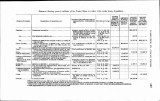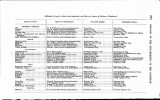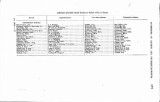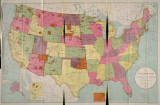| OCR Text |
Show COMMIBRIONRR OF INDIAN AFBAIRR. 57 Morrfs, Minn.; Crow, Fort Belknap, Fort Shaw, and Wathead, Mont. ; Oarson Nev. ; Fort Berthold, N. Dalr.; Grande Rande, Silets, Umatilla, Warm Springs, and Chemawa, Oreg.; Cantonment, Ponca, and Kiowa, Okla.; Carlisle, Pa.; Rosebud and Sisseton, S. Dak.; Southern Utah, Utah; Neah Ray, Puyallnp, Spokane, and Yakima, Wash. : Lac du Flambeau, Tomah, and Wittenberg, Wis., and Shoshone, Wyo. The floor space la divided into two parts, separated by a grlll arch made by the Indian pupils at Hampton Inatltnte, Viriginia. In the space in front of the mch- One case contains a miniature wagon and harness from Haskell; a set of double harness from Phoenix; a model hay haler and rack made by a Seneca ex-pupil ; a small buggy bed, parquette border and inlaid work, and samples of blacksmith and tin work from Cariisle; ax and hammer bandies from Grand Ronde School; boys' and girls' shoes from Carson City, Haskell, Carllsle, and Morris schools; blacksmith work from Warm Springs ; brooms and carpentry work, etc., from other schools. Two cases are devoted to samples of work from the tailoring and domestlc departments of the schools, in whieh plain sewing predominates; hut a few pieces of lace work are included, together with samples of beadwork and baskets made by pupils. Another case is used to display the Salem School exhibit, which consists of samples of plain and fancy sewing; a set of buggy harness; a set of blacksmith tools made by a pupil for his own use, and varions other articles, together wlth silver trophies won by pupils in athletic contests. The remainine case contains many old-time articles, some of theh datina-back to the time of the 1,ewis and Clark expedition. The principal oues are a decorat& buckskin d m worn by the wife of the Umatilla chief, Win aD snute. and her mother before her; a fine corn-husk hand bag, wlth a partly made bag sbowing the method of manufacture : 'an old Indian saddle and saddle equipment. bow, arrosrn, end quiver; a nalire comb; a bocksin model of a Shoshoni tepee; "fire sticks" for producing fire by friction, used by the Chehalin Indians before the advent of white men on the Paciflc coast; a small Makah fishing canoe with fish spoon and wbale-oil dish; a full-sized carrying band with carrylng basket; beaded tobacco pouch and pipes: a stone bone breaker used by the Shoshoni: beaded moccaslns; musical instruments, and samples of wild rice, corn, pemml-can, mokoks of maple sugar, etc. Outside the cases are a small wagon made at the Salem School and Borne blacksmith work from Phoenix, besides the Wichita grass house, the tool chest, tabonret, sloyd, and chart of statistics, which were in St. Louis. In the space beyond the grill, which is fltted up as a resting place for vlsitors, are: A carved desk from Phoenix; a case of drawn work from whwls on the Paelfle m a t ; wing frames of class-room papers; a bookcase fllled with mall artides from reservation schools, besides the table, settee, and photographs, and the oil paintings by Angel Dccora, which were at S t Louis. A few Navaho rugs give mlor to the exhibit. This is the flrst exhibition of Indlan work made on the Paclflc mast where the general public have had an opportunity of examining the character of the training given pupils in the Government Indian schools, and the results fully repay the labor and expense fnenrred. |







































































































































































































































